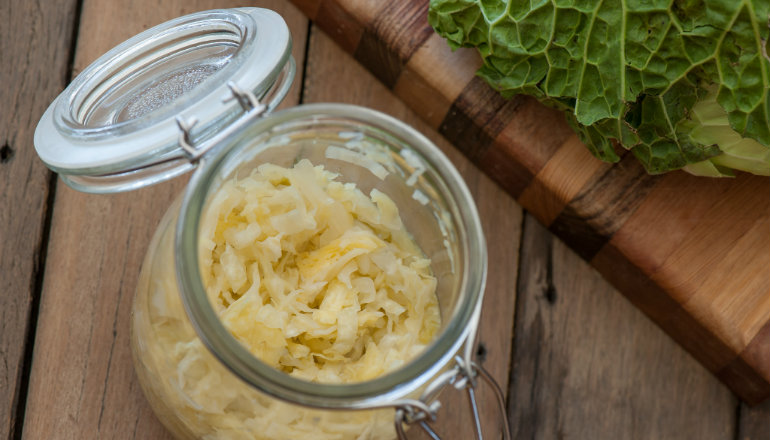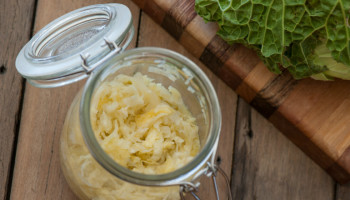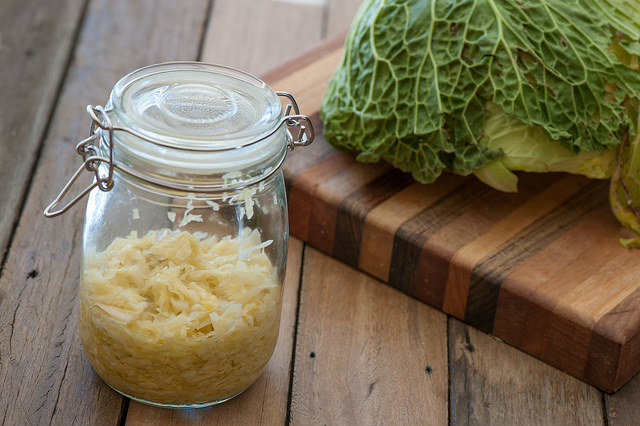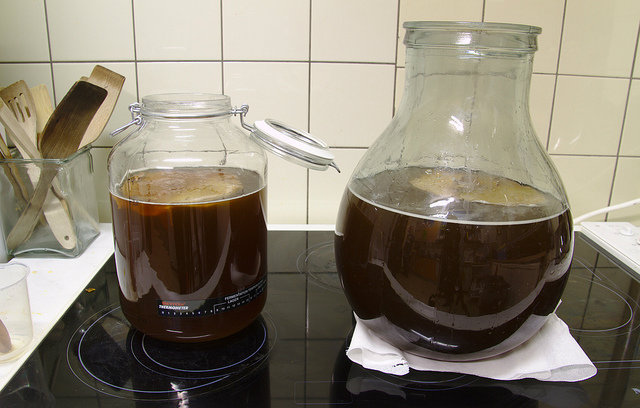 Reading Time: 5 minutes
Reading Time: 5 minutesIf you’ve paid attention to health news in the last few years, you’re aware of the importance of probiotics, or live bacteria and yeast beneficial to your health. A healthy, thriving digestive system is full of this good bacteria, which influences everything from our immune system to our mental health, and of course our digestion.
Many factors can upset the ideal balance of good gut bacteria. Stress, processed foods, antibiotics, a lack of fiber (especially leafy green vegetables), and poor sleep habits all do damage to the gut microbiota. While it’s important to address all these factors, which you are doing by participating in the Whole Life Challenge, you can also help out your gut with probiotic supplements.
Your Options for Priobiotic Supplementation
There are a few ways to supplement with probiotics. The first is to purchase probiotic pills. This is the easiest option, but since the FDA treats these supplements as foods, not medicine, the makers of probiotics don’t have to prove the efficacy or safety of their products. It’s likely many of the good bacteria die while sitting on the shelf, and the probiotics in supplements are less diverse and plentiful than those in fermented foods.
Purchasing fermented foods is another option, but many purchased fermented foods are pasteurized, pickled instead of fermented, or prohibitively expensive.
The cheapest, most effective option for probiotics is home fermentation. There is a whole world of fermented food you can try at home. Many of them, like kefir and yogurt, are not compliant on all the Whole Life Challenge nutrition levels. Some of them, like kombucha, can be complicated.
The easiest way to try your own home fermenting is to start with sauerkraut. Not only is the result delicious — I love adding it to my lunchtime salads — it’s cheap, easy, and you don’t need to buy any starter cultures.
DIY Sauerkraut Ingredients and Recipes
To make sauerkraut you need three things: cabbage, salt, and a container.
Let’s start with the container.
If you’d like to make a small batch, use a mason jar. Here is a great step-by-step recipe for mason-jar sauerkraut.
I use this one-gallon ceramic pickling crock. For sauerkraut in a crock, I really like Michael Pollan’s recipe from his excellent book, Cooked.
The most important thing to remember when making sauerkraut is the cabbage must be submerged under the brine while it’s fermenting. If you use a crock, you can place a weighted plate over the cabbage to keep the cabbage submerged. With a mason jar, you can use a smaller jar filled with marbles or rocks. (I don’t have a weighted plate, so I put a jar full of water or rocks on top of a regular plate to weigh it down.)
My Personal Sauerkraut Tips
I’ve been making my own sauerkraut for a few years, and here are a few things I’ve learned along the way:
- Be very patient with the natural brining process. After you combine the sliced cabbage and salt and are kneading them together, you’ll notice the salt starting to draw the moisture out of the cabbage. There is usually enough moisture in the cabbage to create sufficient brine to submerge the cabbage, but you have to be patient. It can take up to ten minutes of massaging to get enough liquid. For the first 24 hours, press down on the plate or jar a few times to release more liquid. You should have enough liquid to cover the cabbage.
- Don’t worry too much about mold. The cabbage under the brine is preserved by the lactic acid, but you may find mold develops on the surface of the sauerkraut or on top of the liquid. This could be an indication that the ambient temperature is too hot, but it’s no reason to throw out the sauerkraut. Just scoop out and discard the moldy bits — the rest of the sauerkraut is fine. Bubbles, foam, and white scum are good! They are all signs of healthy fermentation.
- It’s an art, not a science. There’s no hard and fast rule about how long to ferment sauerkraut. It depends on the size of your jar, the temperature in your kitchen, and your individual tastes. I usually ferment my crock of sauerkraut for a month in the winter, about two weeks if it’s hot out. Experiment with different lengths of time. There’s really not a wrong way to make sauerkraut!
More Home Fermentation Fun
If you discover, as I did, you enjoy fermenting food, the next level of difficulty is kombucha. Not only is kombucha a delicious alternative to alcohol, the cost differential between homemade and store-bought kombucha is astonishing. A bottle of kombucha costs three to four dollars at the store, but you can make it for less than $2 a gallon.
The best way to get started is to get a kombucha “mother” (the SCOBY, or symbiotic culture of bacteria and yeast) from a friend. If you don’t have any kombucha-making friends, you can try growing your own SCOBY or order one. In addition to selling starter cultures, the website Cultures for Health is also an excellent resource for all things fermented. They have articles, videos, recipes, and tutorials that will answer almost any fermented-related questions.
Home Fermentation as a Hobby
Making your own fermented foods is a fun project and a great hobby substitute for Whole Life Challenge participants who enjoy baking. What’s more, it will likely change your feelings about bacteria. Most of us were conditioned to view bacteria as something to be eradicated with antibiotics and antibacterial soaps and lotions. Although there are some very nasty bacteria that must be treated with antibiotics, probiotics play an important role in our health.
It’s a wonderful kind of magic trick to take an ordinary cabbage and turn it into sauerkraut, bubbling and foaming with lactobacillus, a type of probiotic found in grocery-store supplements. Once you start experimenting with making your own fermented foods, you might not want to stop.









